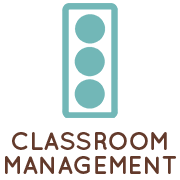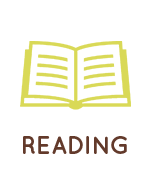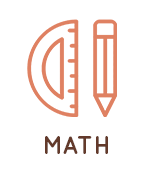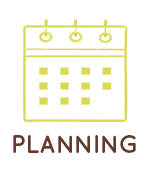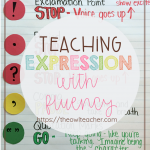
Recently I posted 8 Ideas to Build Fluency, but there is so much more to fluency than just reading at a good pace and accurately. Fluency is also about reading smoothly, as I described in my reading interventions blog post. However, today, it’s all about teaching expression in fluency!
When it comes to the expression in fluency, it is really about getting students to take note of the punctuation first. I want to share a few engaging activities that I like to do at the beginning of the year to make sure my students understand what expression in fluency is all about so they can apply it all year long in their reading.
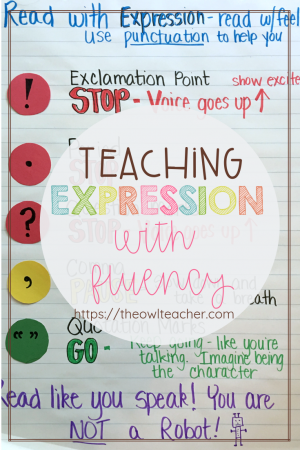
Teaching Expression in Fluency Activities
One of the first things I do is discuss with my students the effects that punctuation has on our voices when we read. I create a chart with the punctuation marks, and together we discuss each main piece of punctuation. After partnering up, I direct students to turn to their partner and to take turns asking a question. As their partner is asking the question, they are to listen to the voice and notice what happens. Students should notice that as the student is asking the question, the voice rises, and then the student comes to a stop. We add that to our chart. We repeat this with statements (period), exciting news (exclamation), and lists of things they have in their bedrooms, toy boxes, video games, books, etc. (comma). We then talk about quotation marks.
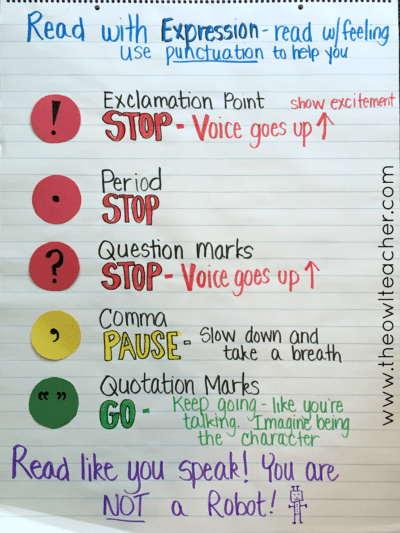
After we get a bit of a feel for each piece of punctuation and what our voices do with them, I then give each group of students an excerpt from Shel Silverstein’s “The Homework Machine” poem. Once students have the chart paper, I give them red, yellow, and green construction paper dots. Together as a group, they decide which dots go where and draw the punctuation on it. Once students think they are done, I go over it on the doc cam showing exactly which punctuation is where and discussing which dot they should have (and which voice they should use).
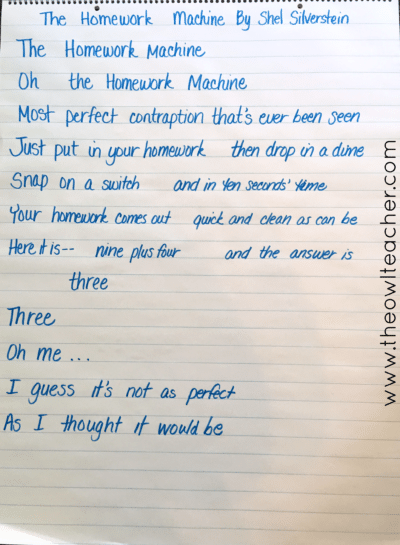
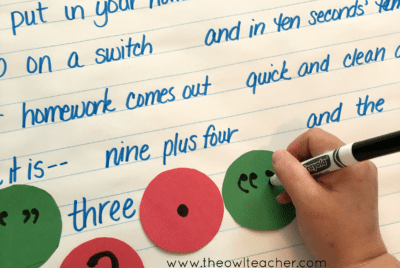
Once each group has their charts corrected, they then practice for a few minutes, reading it together with the expression they just learned based on punctuation. Then, they read it as a group to the class. I don’t make them come to the front of the room but just read it where they are. I have them use the dots as visual cues on their chart paper to slow down, stop, or go (along with if your voice goes up or not).
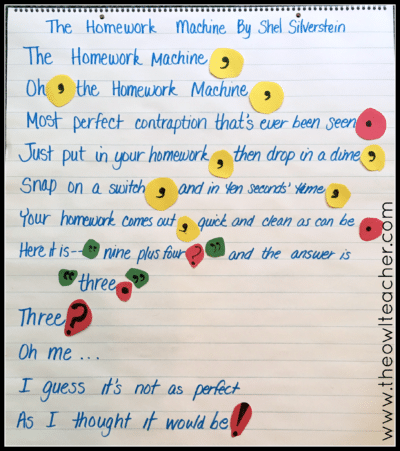
The next day or so, we practice again using words and phrases that are the same but with different punctuation each time. We talk about how mom can sometimes use the same word over and over but have a different meaning each time just based on how she says it. It’s all about the expression – and punctuation!
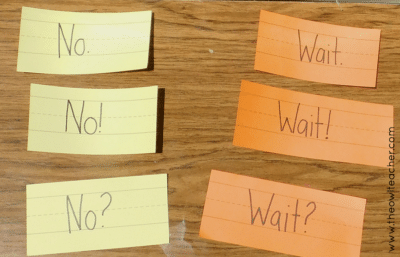
Throughout the year, I continue practicing expression in fluency through repeated readings and echo readings. I do this in all content areas. I also have students participate in a lot of reader’s theater, where I encourage them to try out different voices to match the characters, along with radio reading.
Overall, the idea is that students need to be practicing more than just speed and accuracy when it comes to fluency. They need to be working on smooth phrases and expression in fluency!


